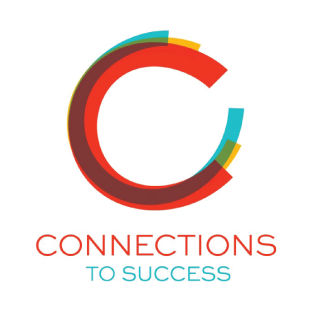 The other day, I found myself trying to convince my daughter to knock out her PE credits in summer school so she has room in her schedule for other “cool” classes during the school year. (Yes, I used the word “cool” and received the same exaggerated eye roll many of you are probably doing as you read this.)
The other day, I found myself trying to convince my daughter to knock out her PE credits in summer school so she has room in her schedule for other “cool” classes during the school year. (Yes, I used the word “cool” and received the same exaggerated eye roll many of you are probably doing as you read this.)
In short, I was “selling” her. I was only missing the sports jacket and loud tie.
Mention “sales” and many people cringe. We all hate to “be sold” and many of us don’t want to be seen as a salesperson. It’s a misunderstood word.
In reality, we all sell every day. We pitch ideas to our boss. We try to convince our co-workers to grab a salad for lunch instead of a burger. We dangle iTunes gift card carrots in an attempt to convince our teenagers to mow the lawn. Bestselling business author Daniel Pink writes in his book “To Sell Is Human,” one in nine Americans work in sales. And so do the other eight.
But sales is an abhorrent thought because the primary mechanism has traditionally been manipulation. No one wants to be manipulated.
Especially your customers.
If your sales team is still delivering a manipulative experience, you’ve just identified the reason your sales are not as strong as you’d like. Now, take action.
Stop selling.
Most salespeople believe their job is to sell a product or service. It’s not. Most customers have already identified the product or service they need through online research, talking to peers or through their employees.
The job of the most successful salespeople is to solve a problem. If you can solve a problem for a prospect, you will gain a new customer.
In addition, today’s business solutions are far more complex. Most customer problems are solved through a layered solution that’s some combination of products, services and technology. This level of complexity gives even seasoned decision-makers pause. As a result, they often consult other members of their team. These influences occur during internal conversations that your sales team cannot control.
For example, we have a client who is a manufacturer in a highly specialized, but very competitive industry. The sales process is almost always an RFP and the final decision-maker is usually a committee made up of politicians (i.e. a board or city council). Since our client offers the highest quality option, they are never the lowest price. It takes money to build quality. The only way they can win on price is to sacrifice quality. You can’t build a jet fighter with a twin-engine budget.
To complicate matters, the project sponsor is usually an administrator. They’ve done their research. They’ve identified all the value a higher quality product brings to the party. They recognize our client’s product will save money and create efficiency.
But the project sponsor doesn’t make the final decision. So when we suggested our client solve a problem instead of selling a product, they were a bit squeamish. That’s not how it’s traditionally done.
To their credit, they made the leap. They began teaching their customers how to manage an RFP process. How to demonstrate value to a disengaged committee. And they began to win.
Start looking outside in
They didn’t need a better sales process. Their customers needed a better experience.
In this blog, we’ve talked in the past about how customer experience is different from customer service. Customers don’t expect extreme experiences. They simply want you to make their experience effortless. So imagine the power of making their life easier.
To deliver a truly effective customer experience sale, your sales and marketing teams both require a unique understanding of how and why your customers buy.
(As an aside, if you feel, based on past experiences, that you know why your customers buy keep in mind the buying process has changed. The solutions are more complex. Technology has become prevalent. The Internet provides an abundance of information, all readily available. The personal and work life of your customer has blurred due to companies trying to get more done with fewer resources.)
The most successful teams have become aligned behind a clear customer experience.
Customer need drives your marketing.
Targeting the right person, with the right medium, and connecting them with the right information is key to enhancing the experience during the lead development stage.
In the past, lead generation content often focused on offering a manipulation. By responding customers were promised a limited time offer, a discount or tchotchkes. Imagine instead if you offered customers ideas on how to make them more effective at their job (like our example above)? By educating your prospects, you become an advisor. Who will they trust most when it comes time to make a decision?
Customer need drives your process.
Instead of relying on traditional sales steps (prospecting, meeting, discovery, proposal, etc.) consider adapting steps and metrics based on your customer’s needs. Have you met the customer’s need at each step?
For example, face-to-face meetings are still vital, but when this meeting happens should be defined based on the customer’s need, not your defined sales process. By forcing a face-to-face meeting prematurely, the customer experience could potentially become annoying, especially if its not actually creating any additional value for your prospect or your sales person. Or your prospective buyer may prefer purchasing online. It’s impossible to know without understanding your customer.
Customer need drives your structure.
Companies have outside sales teams, inside sales teams and hybrids utilizing both. Look at your structure. Is there an opportunity to strength collaboration?
For example, in today’s world of instant information access, the faster you respond to a new lead, the better chance you have of turning them into a customer.
By defining the role of your inside sales to quickly respond to customers, define their needs and validate the lead before passing it to outside sales, you’ve demonstrated to potential customers the efficiency and attention you offer to make sure fulfillment is done right. In the absence of an inside sales team, create a dedicated support team for your sales structure.
Your sales people are essentially the first and most frequent contact with your organization. By starting the relationship right, you establish the groundwork for a loyal and long-lasting customer.


